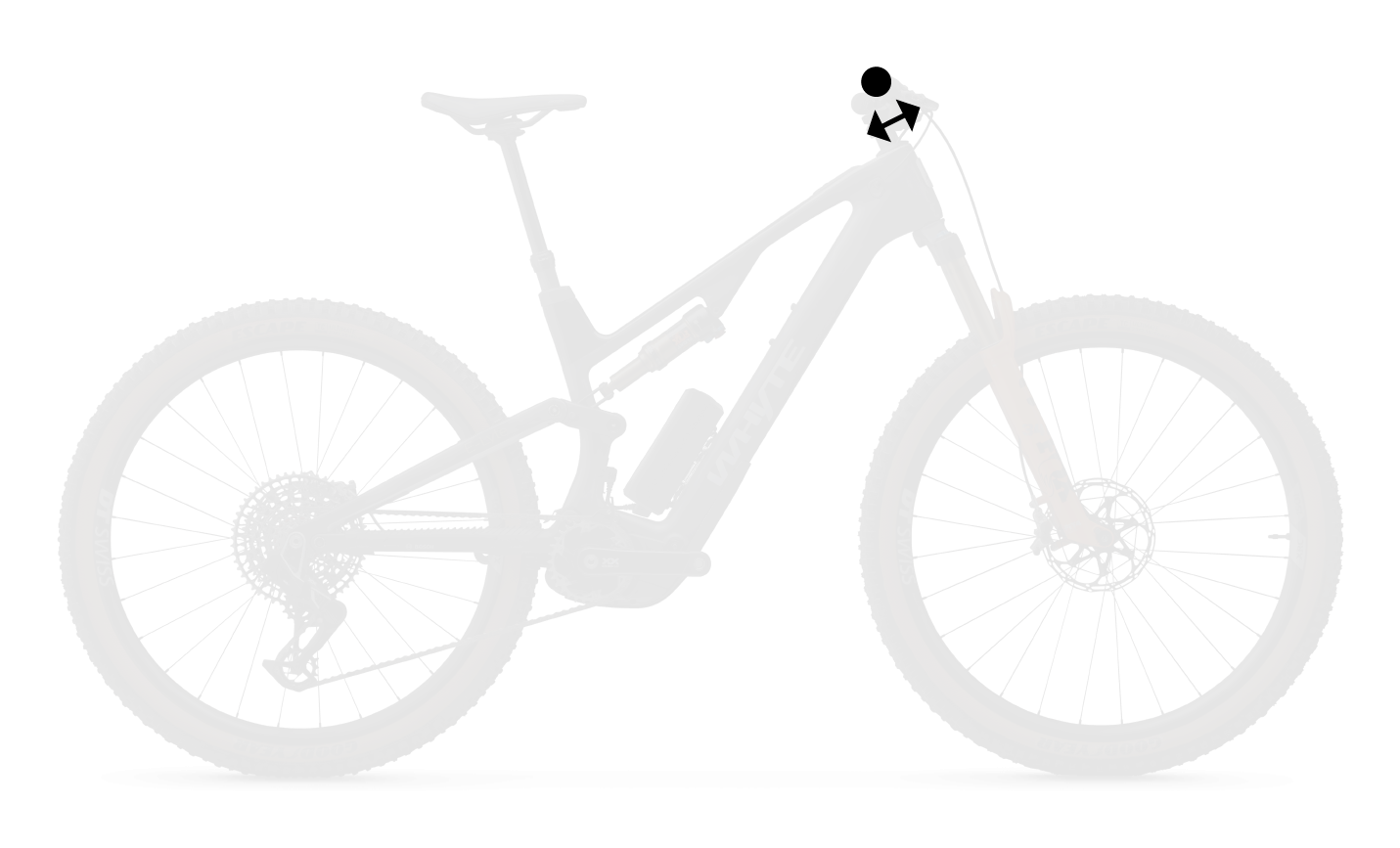-
Total Geometry
Centre of gravity (CoG)
The centre of gravity is a geometric property of any object; it’s the point where the distribution of weight is equal in all directions. Think of a book being balanced on the tip of your finger: it will be balanced only when your finger is positioned perfectly beneath the book’s centre of gravity. If it’s off in any one direction, the book will fall off your finger. Turn the book into a bike and add height into the equation, and things become more complex; if the bike’s centre of gravity is high, it will be less stable and require much more effort to maintain its balance than if its centre of gravity is lower. For example, think of a pyramid turned upside down and balanced on its point: unless it’s perfectly balanced, it will fall over the moment you let go of it. Flip it the other way up, however, and it becomes significantly more stable. When you add movement in as well – forwards as you ride, but also side-to-side as you change direction – CoG plays a significant role in how stable the bike is, and how easy it is to maneuverer and change direction. Of course, weight also needs to be centred – rather than too far forward or too far back – to deliver balanced handling. This is why we engineer all our bikes with a low and centred CoG to deliver you enhanced rider control, handling and manoeuvrability, particularly at higher speeds and on challenging terrain. All to boost confidence and inspire your progress to the next level of personal performance. Deeper joy. Wider, longer grins. Ride after ride
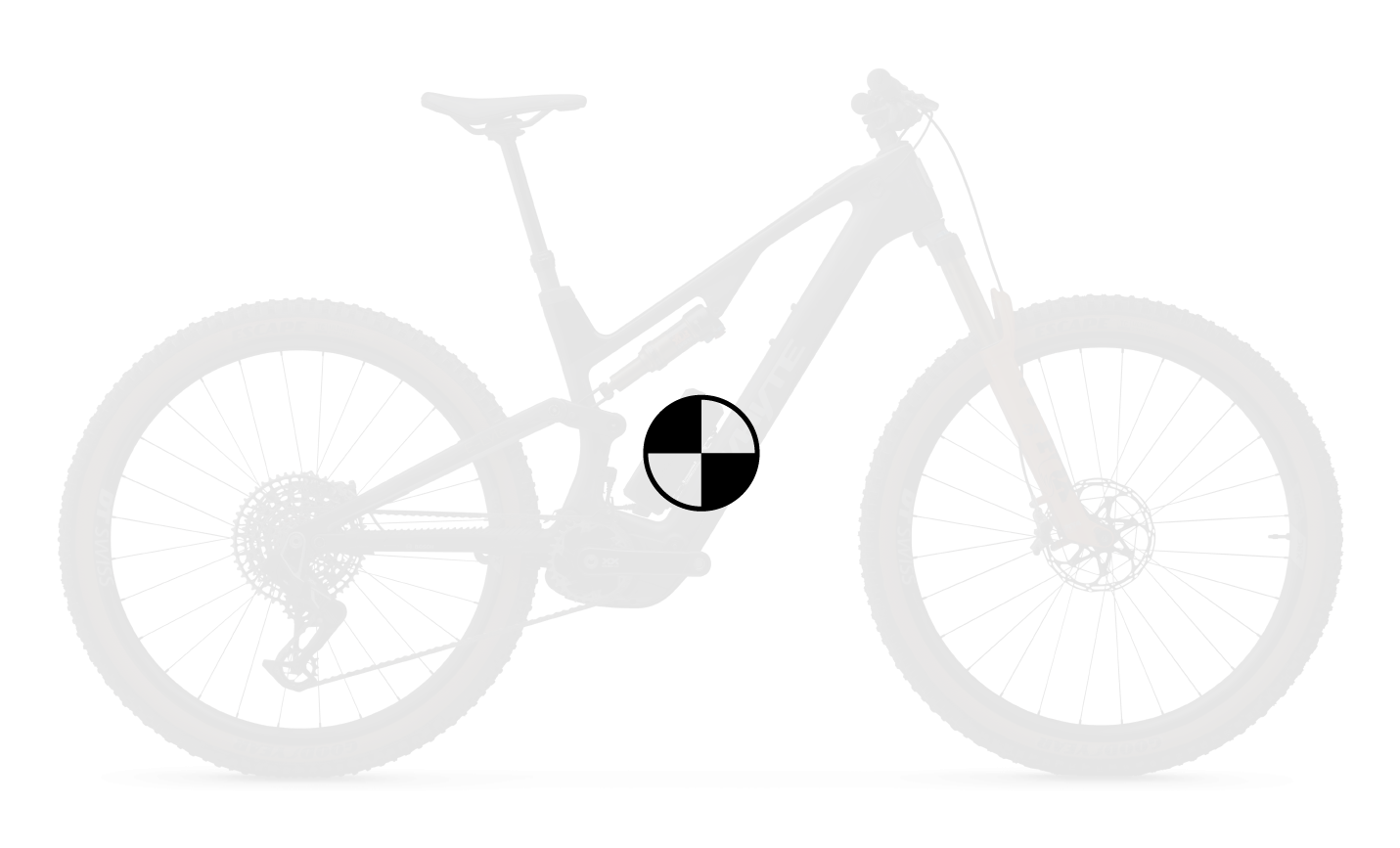
Reach
This is the horizontal distance measured between the centre of the bottom bracket and the centre of the top of the head tube. Today reach dictates how well a bike will actually fit you more than the traditional seat tube length (see below): too short a reach and the bike will feel cramped when you ride it; too long a reach and you will feel too stretched out. It’s important because a correct reach will not only ensure the frame fits you correctly, but that you are able to confidently control the bike in all riding situations – seated, standing, uphill, downhill, along, and more.
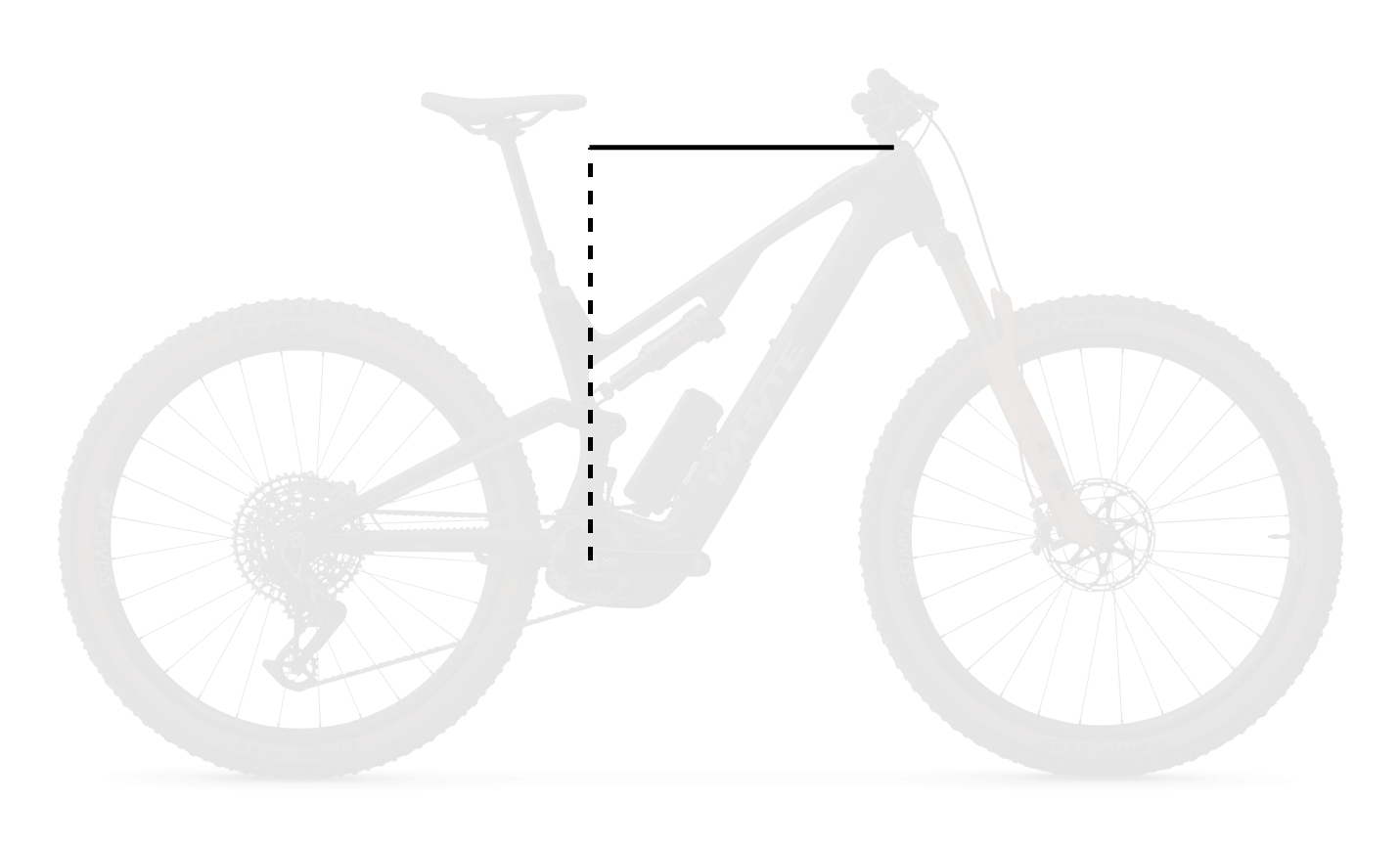
Seat tube (ST) length
This is the measurement of the frame tube that supports the saddle, measured from the centre of the crank axle to the top of the seat tube. It’s important because it’s a guide – but not now the major factor (see Reach, above) – to how well a bike will fit you. A frame that's too big or too small can make it three-dimensionally unbalanced to ride and affect your control over the bike.
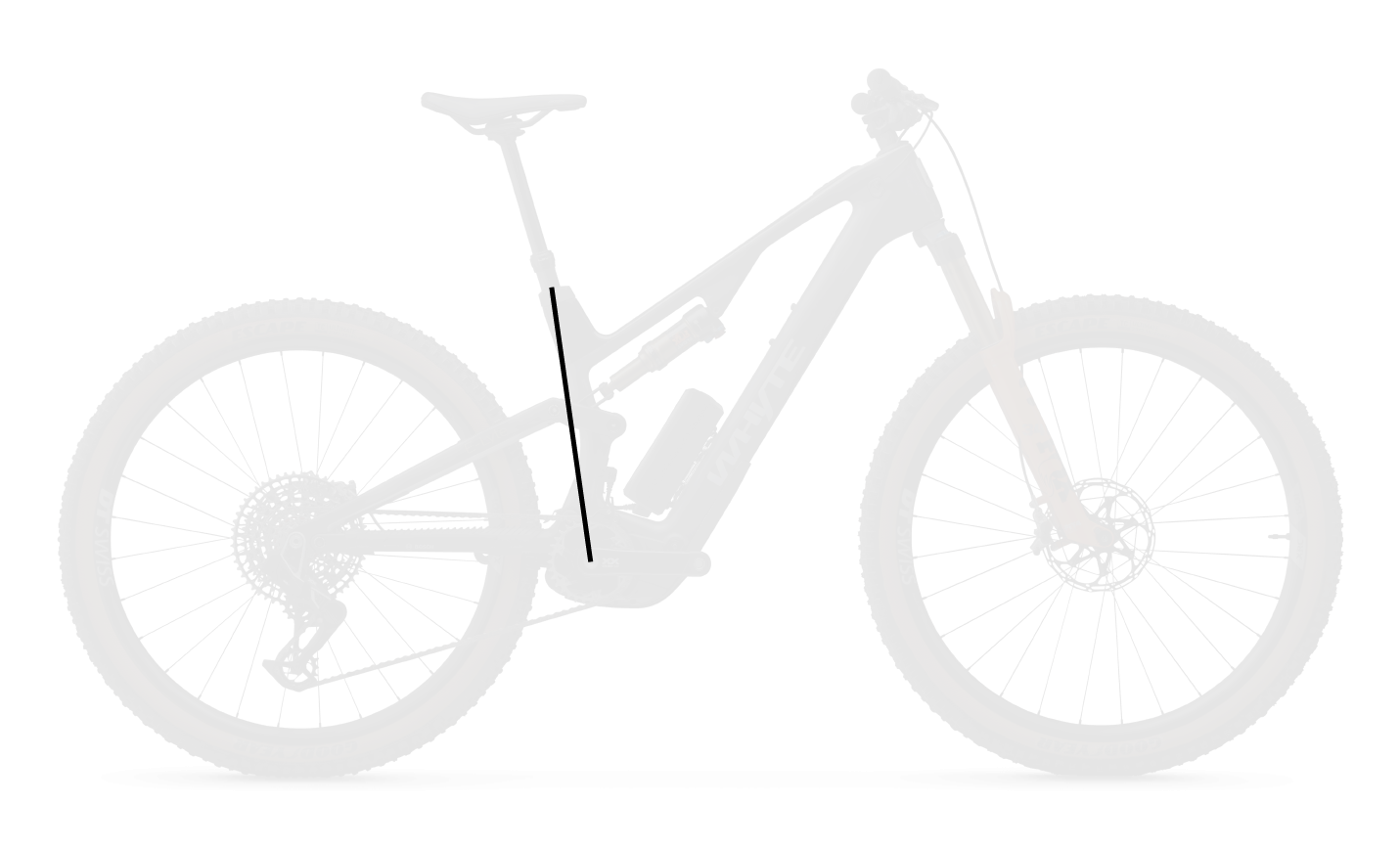
Wheelbase (WB)
The distance between the front and rear wheels affects the bike's stability and maneuverability. A longer wheelbase makes the bike more stable at high speeds, while a shorter wheelbase makes it more agile for quick turns. Most important is how the rider’s relationship to the wheelbase is experienced; centred, neutral, balanced and reactive.
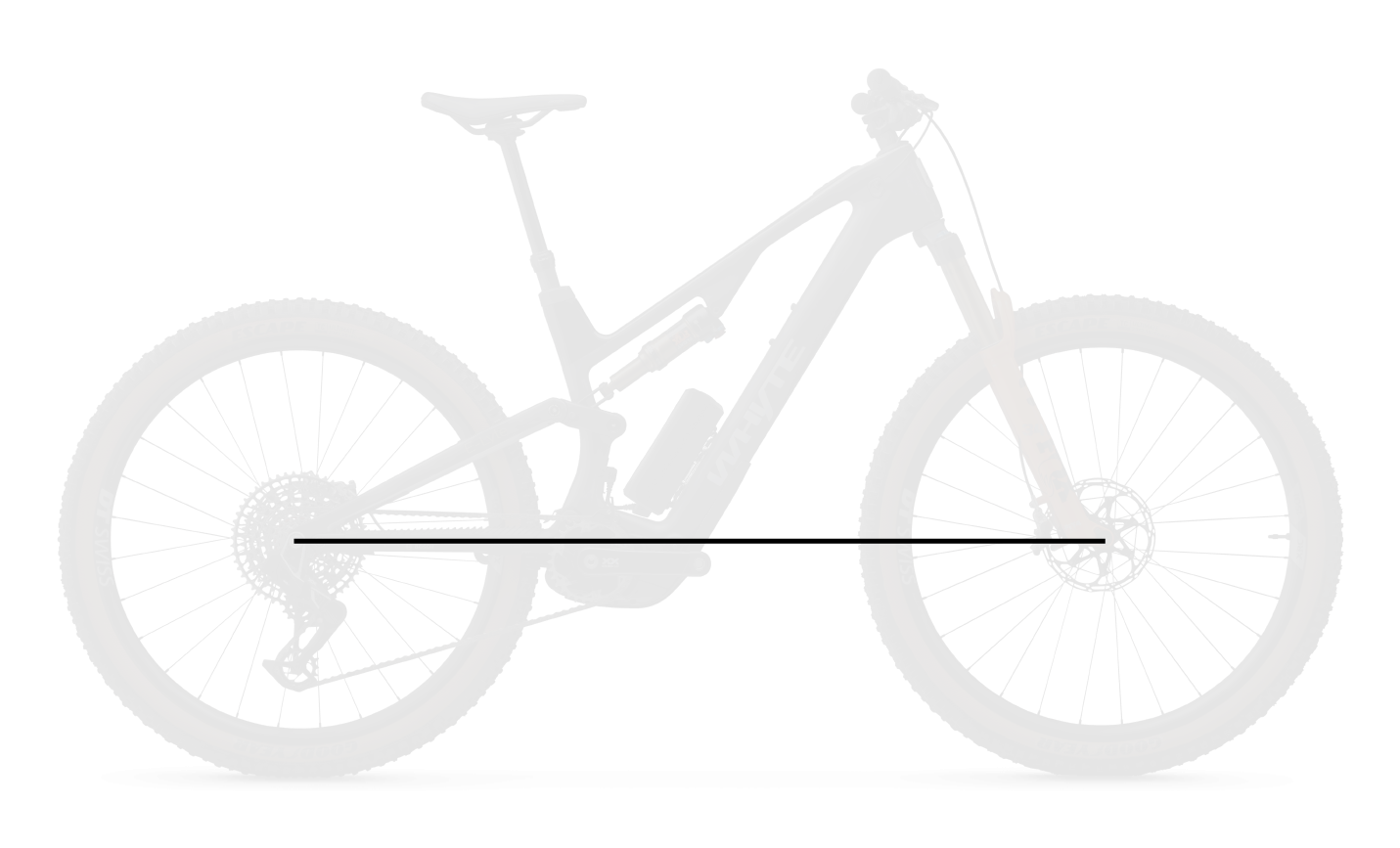
Trail
This is the horizontal distance between the point where the front tyre contacts the ground and the point where the steering axis intersects the ground. It is an important parameter because it influences how a bike responds to steering inputs. The greater the trail, the more stable and predictable the bike’s handling at high speeds – so much so that a longer trail actually offers a self-stabilising effect to help you keep upright and on-course at speed and when in the rough. It’s like having an invisible co-pilot helping calm things down just when you really need a hand without any fuss or fanfare. The trail value is influenced by a multitude of complex dynamic factors, including the fork offset, the head tube angle – including the compression and rebound of the suspension – wheel and tyre size, as well as the dynamic transformation of the contact patch of the tyre itself.
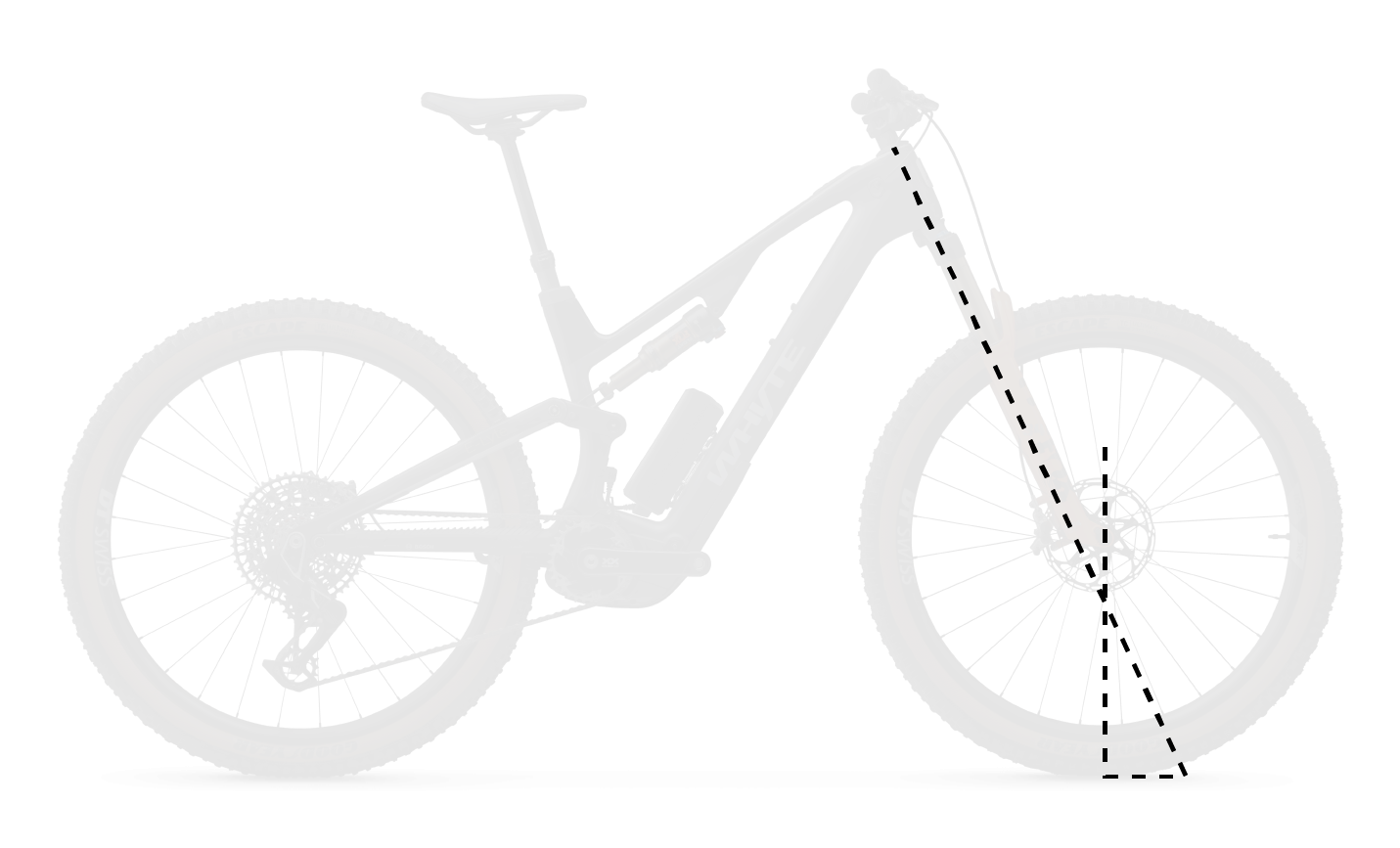
Fork offset
Refers to the forward offset of the wheel centre relative to the steering axis. It is the perpendicular distance between the centre line of the steering axis and a parallel line drawn through the centre of the front wheel axle. A larger fork offset reduces trail, which contributes to less stability and less straight-line tracking. Conversely, reducing fork offset increases trail, making the bike’s steering more stable and better able to resist being knocked offline by destabilising steering inputs from rough terrain.
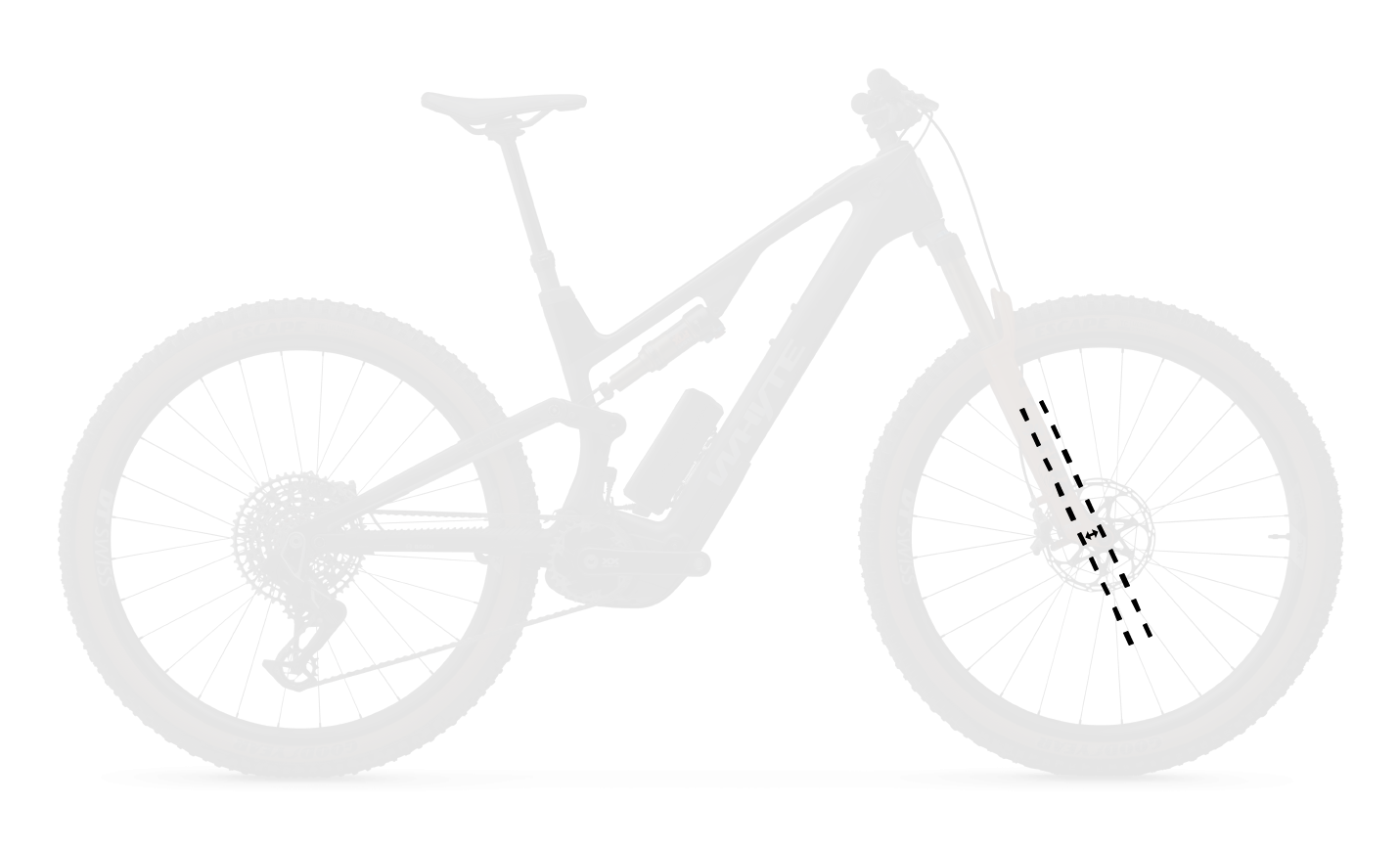
Head tube angle (HA)
This angle affects how the bike steers and responds. Like an increased fork offset, a steeper head tube angle reduces trail which makes the bike respond more nervously to steering inputs but is useful for sharp turns and quick handling. A more shallow (slacker) head tube angle, like reducing fork offset, increases trail, which provides more riding stability and more control when turning. The interaction between these three numbers (head tube angle, fork offset and the resulting trail number) is the key to developing a great handling bike that, as well as being a neutral, stable steering bike is also a dynamic steering bike.
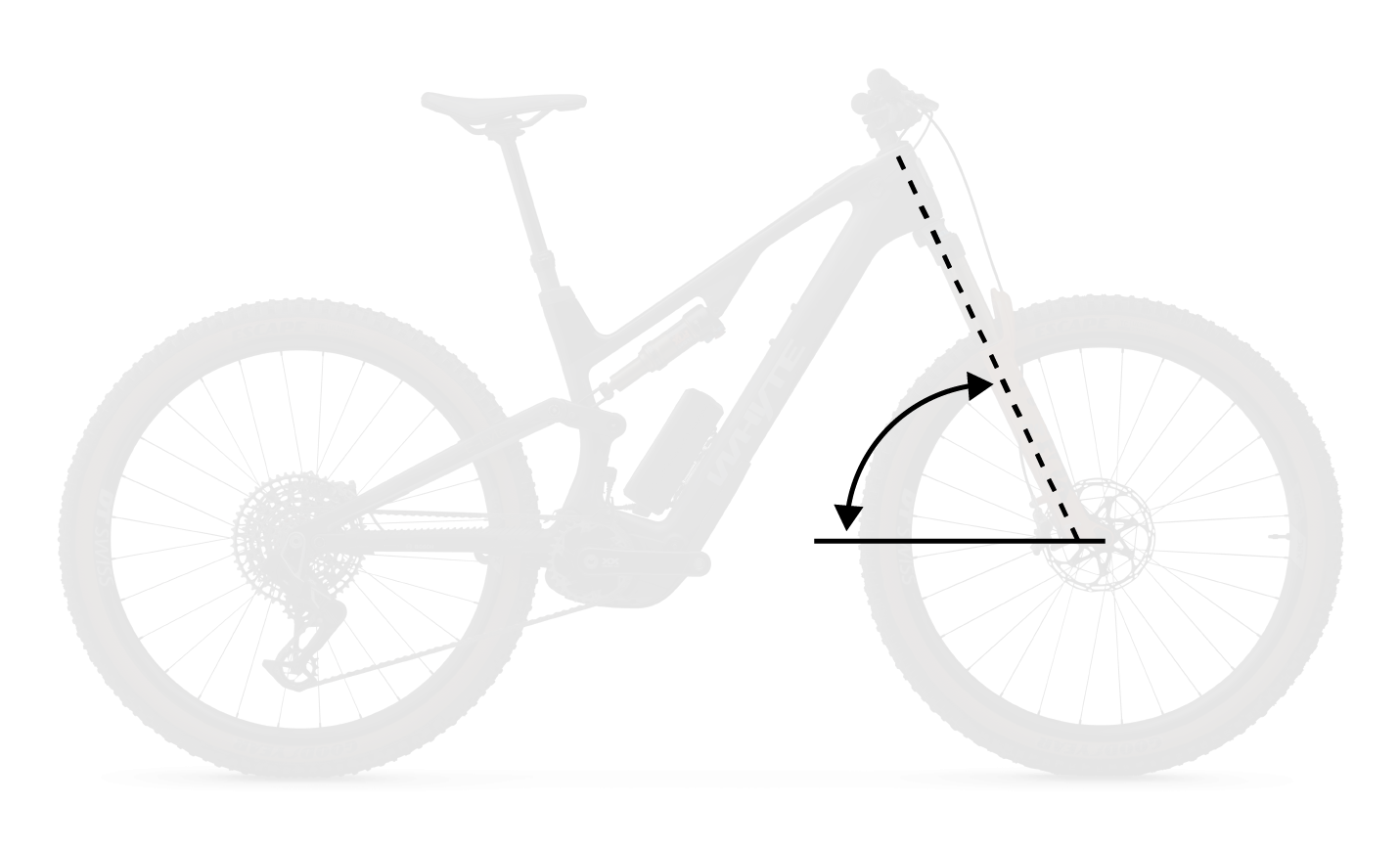
Wheel size
Wheel size has a direct effect on the trail measurement. Bicycles with larger wheel and tyre diameters tend to have increased trail values. Wheel size also affects the bottom bracket height above the ground and its position relative to the wheel centres. Bicycles with larger wheels should have a bottom bracket centre dropped lower than the wheel centre, resulting in the rider being lower and more centred between the wheels, while smaller wheels result in a bottom bracket centre that is closer to the wheel centre. Larger wheels, such as 29in or 700c wheels, provide better rollover capability, and more efficient, smoother rides over rough terrain. Mixed (MX or ‘mullet’) wheel set ups – which have a larger wheel at the front compared to the rear, such as 29in front wheel and a 27.5in rear wheel (as used on our super e-enduro and self-shuttle gravity E-180 bikes) – helps boost the dynamic ride handling capability of these longer travel bikes for riding steeper, rougher and more technical downhill trails.
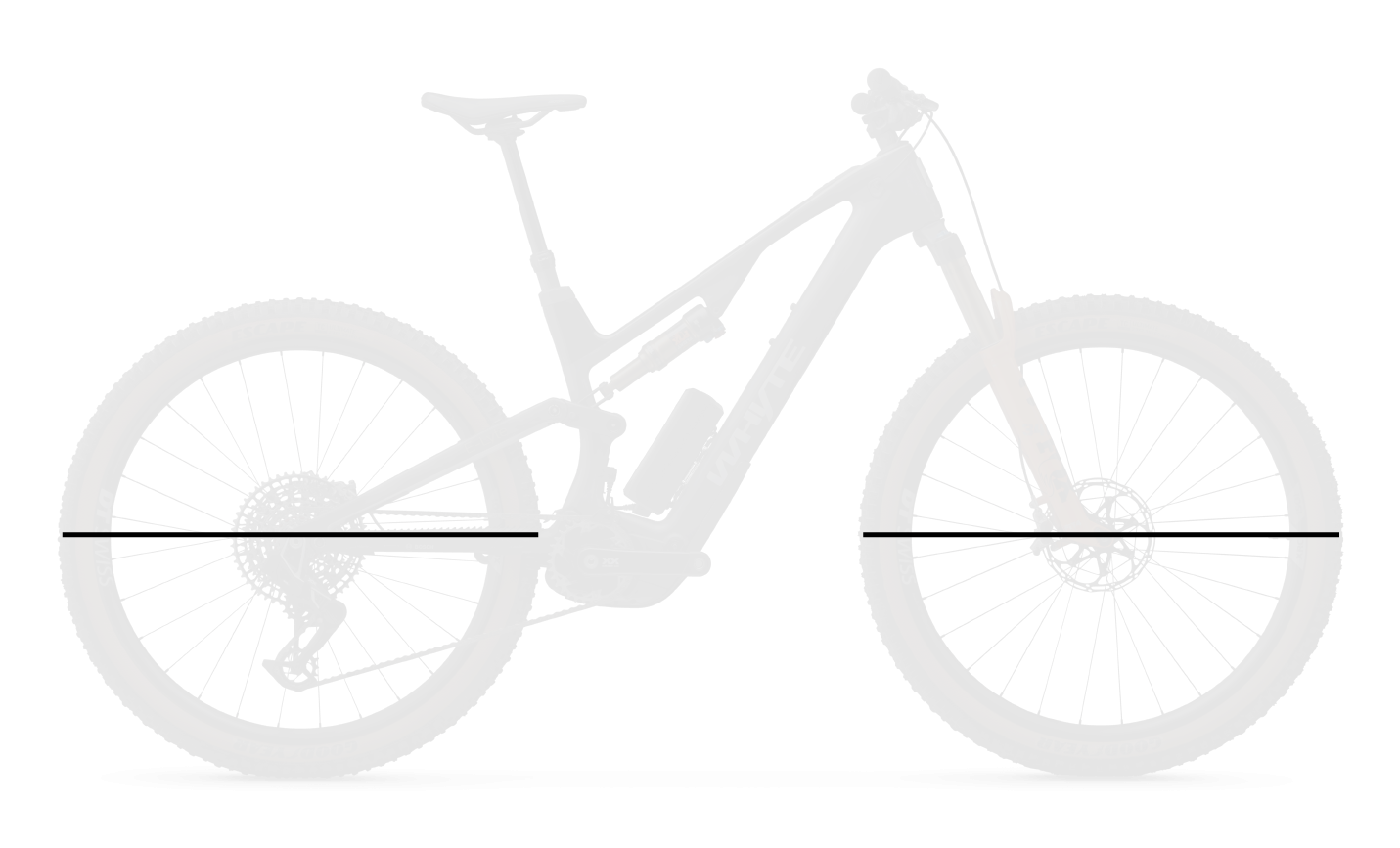
Bottom bracket (BB) height
The height of the bottom bracket from the ground, affects the bike's stability because it sets the rider’s relationship to both the bike and its ride-height. A higher bottom bracket gives more ground clearance for both the frame and pedals when pedaling over obstacles and off-road riding but can increase the centre of gravity (CoG) of the bike as well as the rider combined, while a lower bottom bracket reduces the CoG and improves stability and cornering.
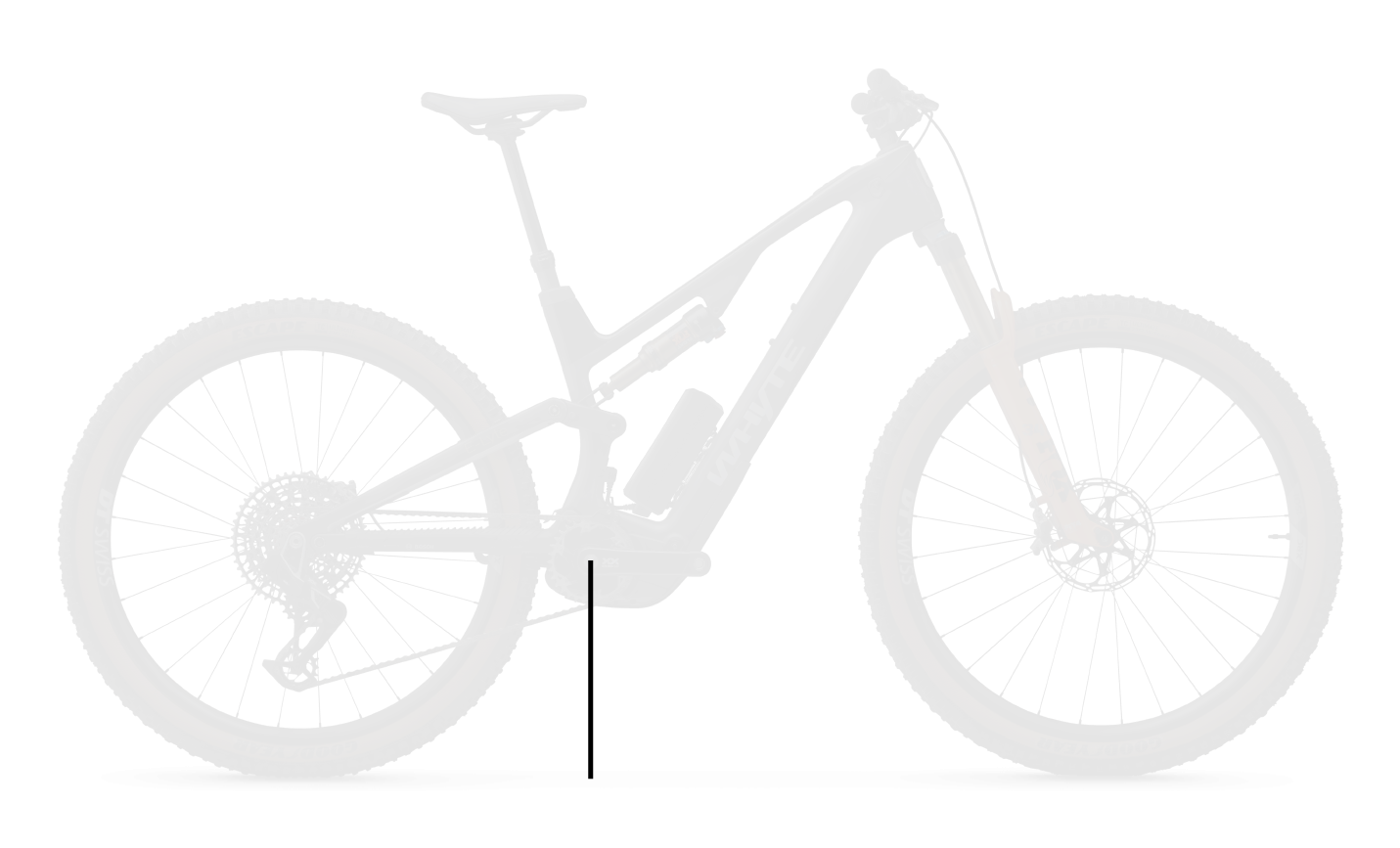
Chainstay (CS) length and front-centre
As a general rule a shorter chainstay makes the bike feel more responsive and agile, while a longer chainstay provides stability and a smoother ride. However, when the length of the chainstay and the length of the front-centre are calibrated together, they balance the position of the rider within the longitudinal layout of the bike. Achieving a balanced, centred and low rider position between the wheels is critical for all frame sizes, and impacts how the bike accelerates, stops and handles in all three dimensions.
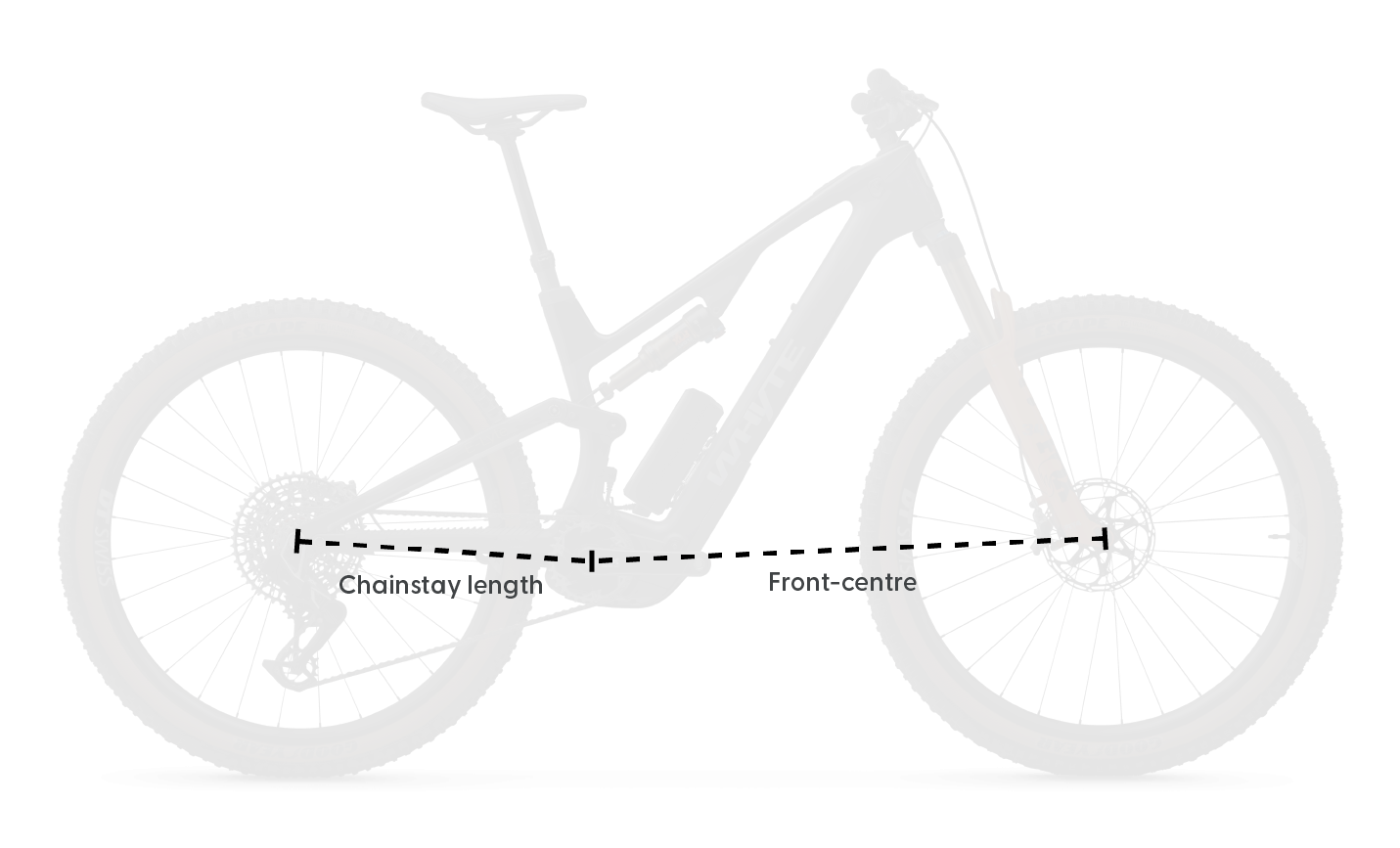
Seat tube (ST) angle
As a general rule a shorter chainstay makes the bike feel more responsive and agile, while a longer chainstay provides stability and a smoother ride. However, when the length of the chainstay and the length of the front-centre are calibrated together, they balance the position of the rider within the longitudinal layout of the bike. Achieving a balanced, centred and low rider position between the wheels is critical for all frame sizes, and impacts how the bike accelerates, stops and handles in all three dimensions.

Handlebar width and stem length
Wider handlebars coupled with shorter stem lengths generally offer better steering leverage for increased stability, control and confidence when navigating unpredictable terrain, such as very rough or high-speed downhill trails where riders require more leverage to control high energy inputs into the steering due to deviations or obstacles on the trail. These dimensions are inexorably linked to the other geometry parameters; most notably, reach, head tube angle, suspension travel and fork offset, which all relate to the dynamic geometry of the bike.
